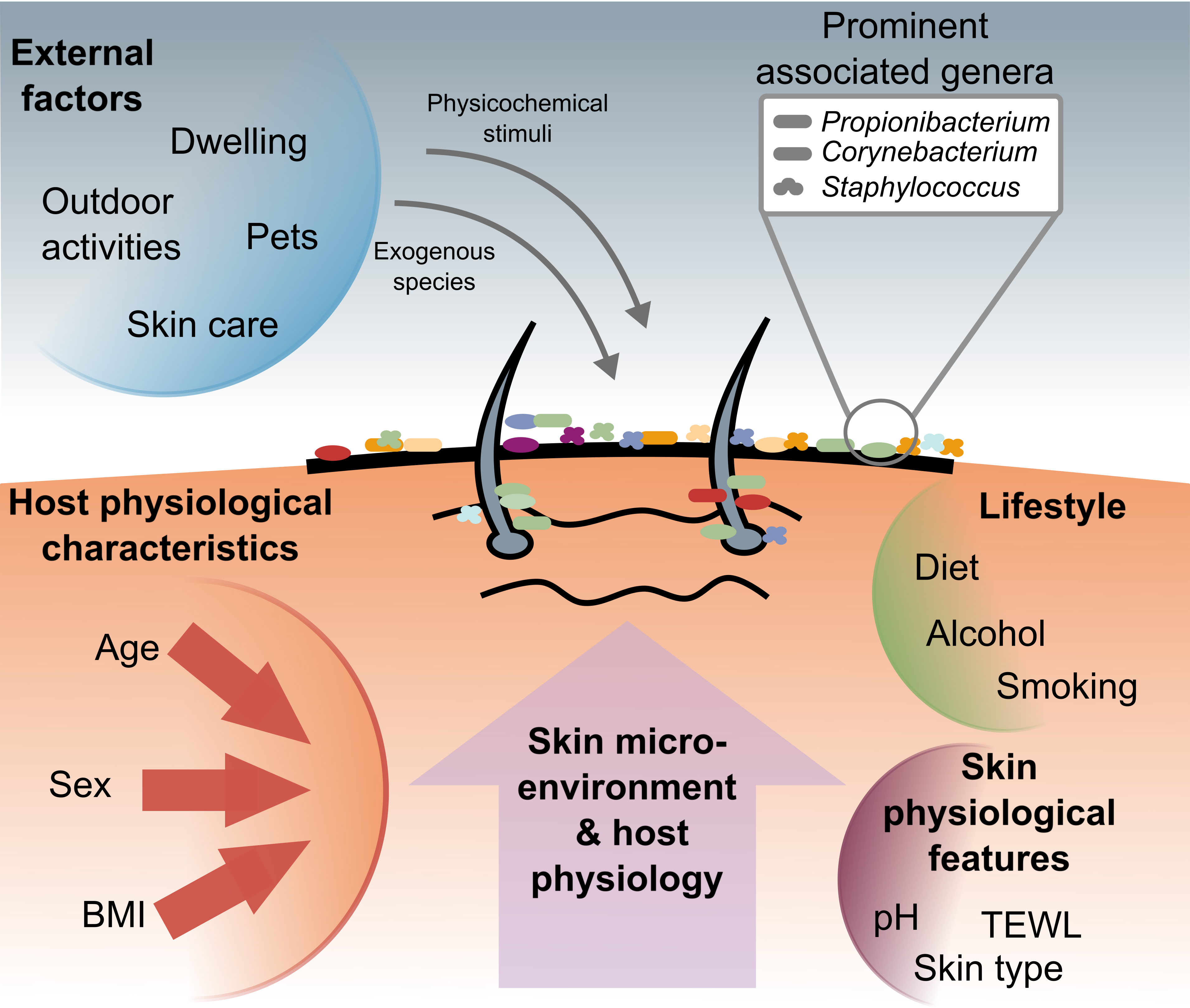People’s physical features, their lifestyle and the environment are associated with the skin bacteria
Many bacteria, mostly harmless or beneficial, live on people’s skin. We know little about what influences these bacteria. Here, we studied the associations between people’s physical features, lifestyle and environment with the bacteria living on their skin. We collected at different body sites a total of 1794 samples from 647 persons from two German cohorts (PopGen and KORA FF4). To name the bacteria, we “read” the bacterial DNA at a specific region of the 16S rRNA gene.
We found that people’s skin characteristics (skin at different sites can be oily, humid or dry), age, body mass index (weight-height proportion) and sex were linked with how bacterial communities were organized on the skin. To our surprise, the quantity of several bacterial types was related to the amount of carbohydrate, protein, fiber, fat and calories people ate. We observed that smoking, alcohol drinking, skin pH (how acid or basic is the skin), skin tone, skin integrity, educational level, and several environmental factors, like the time spent outdoors, were correlated with specific bacterial types. The bacteria related with these factors were mainly from the genera (classification groups) Propionibacterium, Corynebacterium, and Staphylococcus.
We were able to increase what scientists know about factors that may influence the bacteria on the skin. We showed that people’s diets were associated with their skin bacteria. We think that the strongest impact on the skin bacteria comes from people’s skin characteristics and their physical features, whereas lifestyle or environmental factors only have a small influence.
Related publication
Host traits, lifestyle and environment are associated with the human skin bacteria
L. Moitinho‐Silva, N. Boraczynski, H. Emmert, H. Baurecht, S. Szymczak, H. Schulz, D. Haller, J. Linseisen, C. Gieger, A. Peters, L. Tittmann, W. Lieb, C. Bang, A. Franke, E. Rodriguez, S. Weidinger British Journal of Dermatology
doi: 10.1111/bjd.20072

